Beautiful Handicrafts of India
1. INDIAN SHAWL WEAVING
This thread is mostly found in Kashmir and the Kashmir shawl can be called the most delicate and delicate fabric woven from wool in the world. There are two types of woven shawls, Shatosh and Pashmina.
There are two types of weaving methods: in the first method, Kanikar designs and implements the desired patterns on the loom, but in the second method, after weaving the fabric, he simply embroiders it with various patterns that They say Amlikar.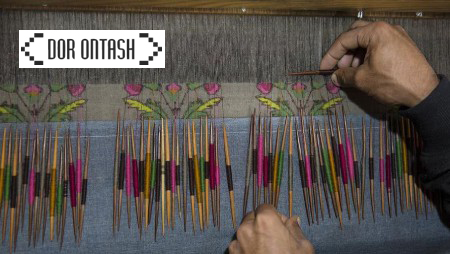
2. INDIAN POTTERY | HANDICRAFTS OF INDIA
Pottery is a clear example of elegance and artistry in ancient artifacts. The tradition of making pottery by hand has been common in India for many years and still exists today. There are various cities in India that produce these beautiful pottery in various colors and designs.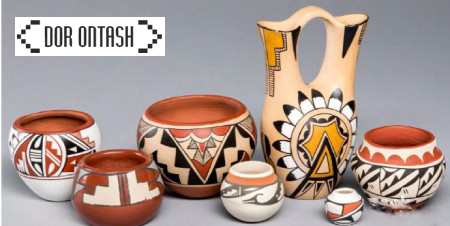
3. WOOD PRODUCTS OF INDIA | HANDICRAFTS OF INDIA
You must have heard the name sandalwood a lot in Indian handicrafts. Sandalwood, an aromatic and desirable wood from a type of tree called Santalum, is the second most expensive wood in the world.
The special characteristics of sandalwood is that it maintains its fragrance for several decades, and due to its soft texture, it has good malleability.
Sandal wood has been widely used in making various accessories such as symbolic statues and statues, decorative boxes, envelope and card holders, pen and pen holders, hand fans and small wooden combs. The therapeutic properties are used in many countries.
The wooden elephant statue made of sandalwood is considered to be one of the most famous handicrafts of India, which is used as a symbol of blessing and removal of obstacles and negative energies in Indian homes and even in other parts of the world.
Except for sandalwood, which is considered the best type of wood for designing wooden handicrafts in this country, wood from other trees such as ebony, walnut, betel and teak are also used in Indian wooden handicrafts. Similarly, lattice work and woodwork are considered as other common handicrafts in some states of India.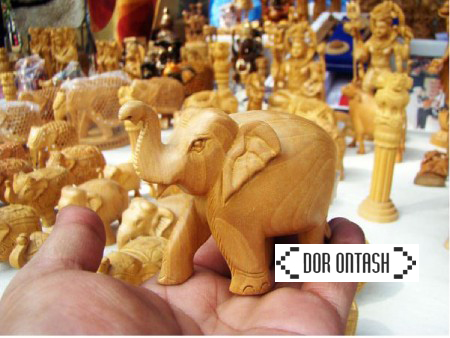
4. INDIAN LEATHER GOODS
Previously, leather was used not only in clothes and shoes, but also in making hats, saddles, shields, etc. Indian leather products are famous all over the world. In India, various leather items such as shoes, bags and clothes are prepared, which are hand-stitched with special elegance. HANDICRAFTS OF INDIA
5. INDIAN HEMP PRODUCTS
Handicrafts made by hemp are very popular in the world. Various items such as bags, shoes, wall decorations, ornaments, etc. are all made of hemp and are very beautiful. In most of their trips, tourists visit the booths and exhibition of handicrafts made of hemp and buy products as souvenirs. HANDICRAFTS OF INDIA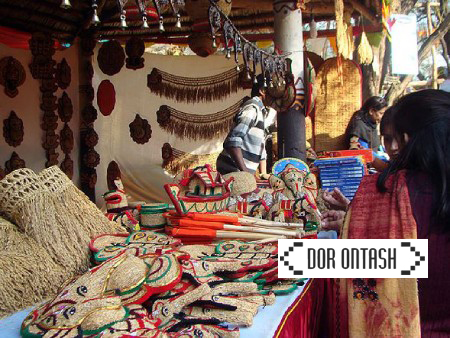
6. INDIAN GOLD | HANDICRAFTS OF INDIA
Indian jewelry and gold is a part of Indian tradition that they use in most ceremonies. These ornaments such as earrings, necklaces, bangles, headbands, nose jewels and bindings have been promoted among Indian women. 14 carat gold and even lower are used in these ornaments, and some are made of silver, and precious and ordinary stones are used on them.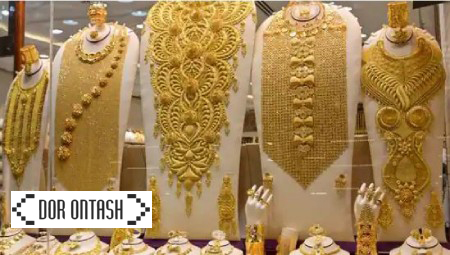
7. INDIAN BRASS CRAFTS | HANDICRAFTS OF INDIA
Brass metal is strong, that’s why it is used a lot in Indian handicrafts. Indians use this metal in various items such as vases, decorative boxes, dishes, bangles and statues.
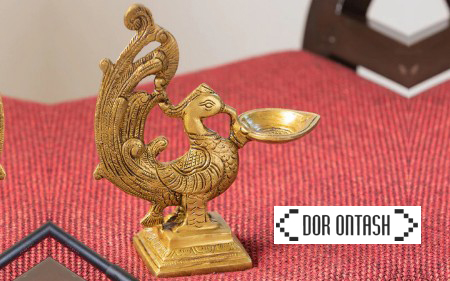
8. INDIAN BAMBOO CRAFTS | HANDICRAFTS OF INDIA
Handicrafts made from bamboo are in harmony with the environment. These reeds are used in the production of all kinds of dishes, baskets, dolls and toys, sofas, jewelry boxes, etc. 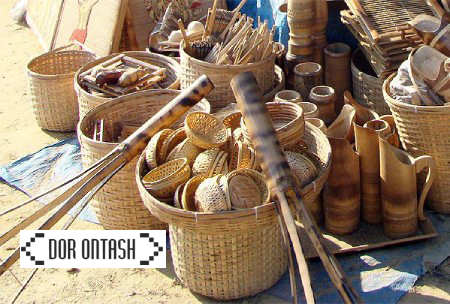
9. INDIAN EMBROIDERED FABRICS | HANDICRAFTS OF INDIA
In embroidery methods, complex designs are used vertically, obliquely and horizontally. These embroideries are mostly done on high-quality fabrics and Indian women use these embroideries to decorate dresses, shawls and any kind of clothes.
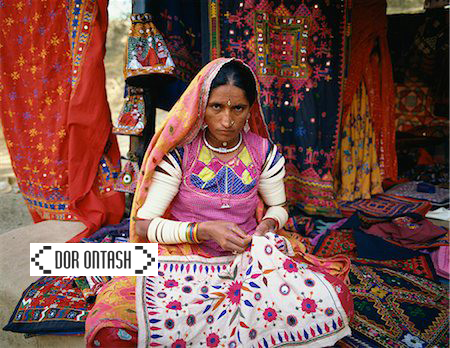
841-02919890
© robertharding / Masterfile
Model Release: No
Property Release: No
Woman doing embroidery, India, Asia
10 INDIAN ZARI WEAVING | HANDICRAFTS OF INDIA
Zari is a type of silk fabric that is filled with additional decorations on it. In this way, gold or silver threads as thick as a hair are used in the wefting part during weaving.
For this reason, except for the almost high weight, it has an extraordinary brightness and attraction. Zari fabric is possible. It can be single-sided for use on clothes or furniture, or it can be double-sided as curtains and hangers.
To produce high quality zari fabric, the required silk is imported from countries like China, Japan and Italy, but enough gold and silver threads for zari fabric are produced inside India.
In recent years, to further reduce the price, cheap domestic silk is used along with gold-plated or brass copper threads.
Common designs include “hunting ground” and “bush flower” designs with intertwined leaves and the like. Of course, choosing such motifs or other designs depends on the taste of foreign buyers.
Usually, Europeans and Americans want simple patterns on gold fabrics because they generally use it as shawls, while Middle Eastern Arab countries prefer large and colorful patterns.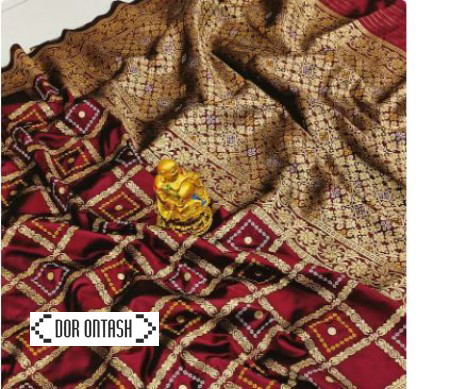
11. INDIAN SAREE DRESS
You have surely seen very Indian clothes called sarees in Indian movies. A sari is a 4.5 to 8 meter long cloth worn by Indian women. One side of it is placed on the waist and the other side is placed on the shoulder. Sari weaving is a household tradition in South India.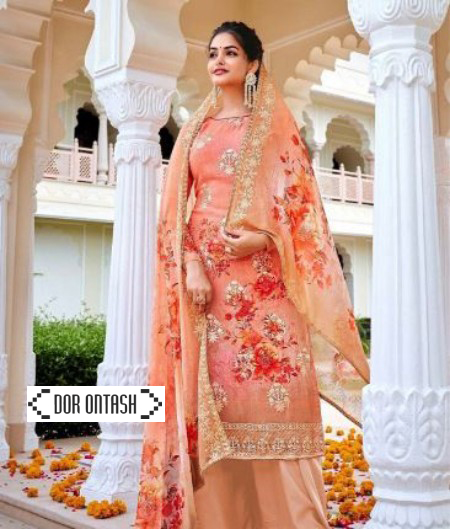
12. Indian tapestry gold (Filigree)
Tapestry is a branch of metalworking art that is done with thin silver or gold wires. This design is very common and popular in Indian gold making because it is very elegant and beautiful and has unique designs. In this style, they achieve a precise pattern or design by twisting the metal very delicately.
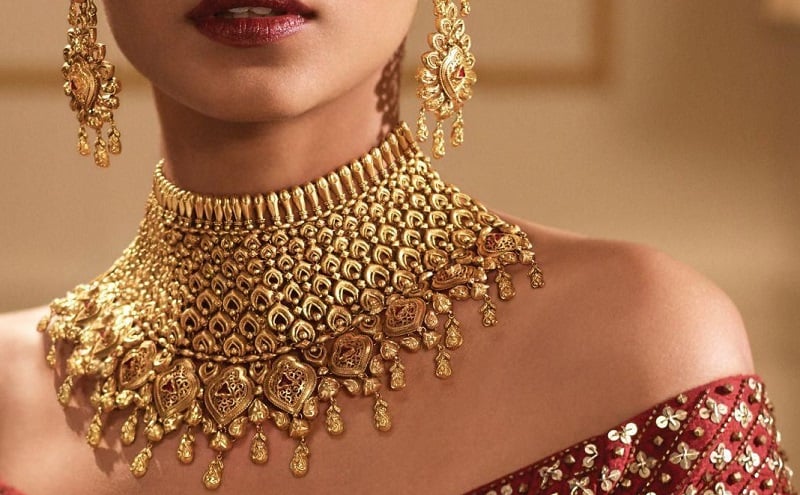
13. KHATAMSAZI OF INDIA
This industry, which is called Sadli in India, has been common for more than 300 years, and it was taught to Iranians and was the monopoly of some Persian masters, but Hindus have gradually learned its secrets.
Khatamsazi is mostly used to decorate the palaces, and the doors of the old palace in Noorbar near Jaipur were decorated using this art.
The main raw materials include plain or painted ivory. There are various types of wood, including wood, betel nut and jujube, tin sheet and silver or brass wire.
The manufacturing method is in such a way that the mentioned materials are made into long and narrow strands and by grouping and gluing them to each other, they act in such a way that after longitudinal cutting, their cross-sections show different geometric patterns. which is finally an interpretation of the main line of flowers.
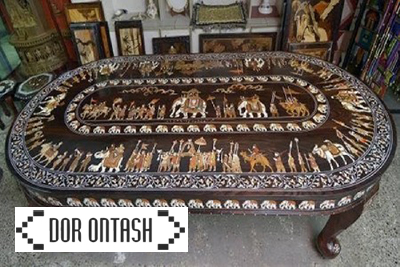 These layer-like strips are cut lengthwise and by gluing them on a thin wooden board, they create parallel strips, and then by gluing these strips on the surface of various objects, the desired design is implemented. To connect the seal layer on the objects, they use animal hair which has a lot of resistance.
These layer-like strips are cut lengthwise and by gluing them on a thin wooden board, they create parallel strips, and then by gluing these strips on the surface of various objects, the desired design is implemented. To connect the seal layer on the objects, they use animal hair which has a lot of resistance.
After drying the manufactured products, he smooths the surface of the objects using a file and sandpaper and finishes it with varnish and alcohol or polyester varnish.
14. Hand woven fabric
The weaving of hand-woven textiles in India goes back to very distant times, which begins with the weaving of simple and purely consumable fabrics such as muslin, linen and chit.
 15 The texture of cotton fabrics
15 The texture of cotton fabrics
In rural Indian society, skill in weaving means having a better social position.
According to the hot weather conditions of this country, the texture of cotton fabrics is common to meet various consumption needs. In the state of Assam, cotton is the main material for making clothes.
In addition, all kinds of textiles and carpets are woven with an emphasis on its beauty. Among the Brahmin tribes of Assam, weaving is known as a sacred profession. For this reason, in addition to weaving cotton fabrics, the mountain tribes of Assam are very proficient in weaving various sarees and shawls using local raw materials.
In addition to Assam, the state of Bengal is also famous for the weaving of very fine and thin cotton fabrics, and there the art of needlework and embroidery is also done as a finishing work on woven fabrics.
These products are generally used as curtains or mosquito nets or many decorations.
In the states of Bihar, Orissa, Uttar Pradesh and Madras, the weaving of cotton fabrics is generally common to meet consumer needs.
16 Dyeing by knotting method
This method is the easiest way to create designs and patterns on all kinds of fabrics such as tablecloths, curtains, bedspreads and women’s clothes (sari).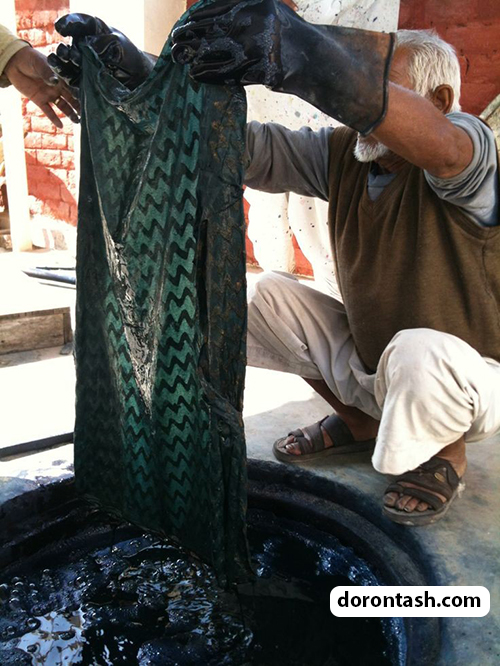
The way of working is that parts of the yarn coils are tied by weaving machines or parts of woven white cloth and the distance between the knots is dipped in the dye solution and after some time it is taken out in As a result, the parts between the nodes absorb the color and penetrate into the parts around the nodes in the form of zigzag lines.
This work is done by using different colors in the distance between two knots, and after opening all the knots, a rainbow can be seen on the surface of the fabric.
In addition to India, this method of designing on fabric is common in China, Japan, Indonesia and most countries of South and East Asia.
Of course, for the transfer of motifs on fabric in each region, there are slight differences with other regions, which are caused by past traditions.
In such a way that some artisans first draw the required design on paper and make holes in the place of the pattern to determine the points that need to be painted.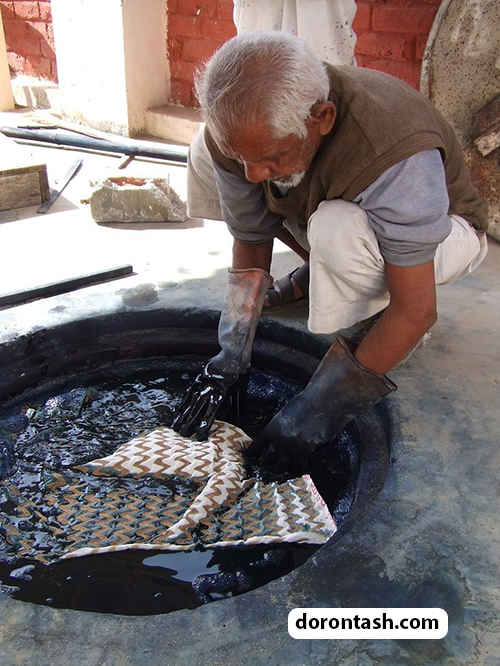
This method of dyeing and creating a pattern on fabric in Iran is done only in the city of Yazd on artificial silk fabrics, whose products are mostly used as curtains and tablecloths, and are called zainah.
17. Sari
Saree is one of the traditional Indian clothes that has many fans among women. Mumbai city will be the best shopping center in Sari. The variety of sarees in Mumbai is so much that it confuses the buyers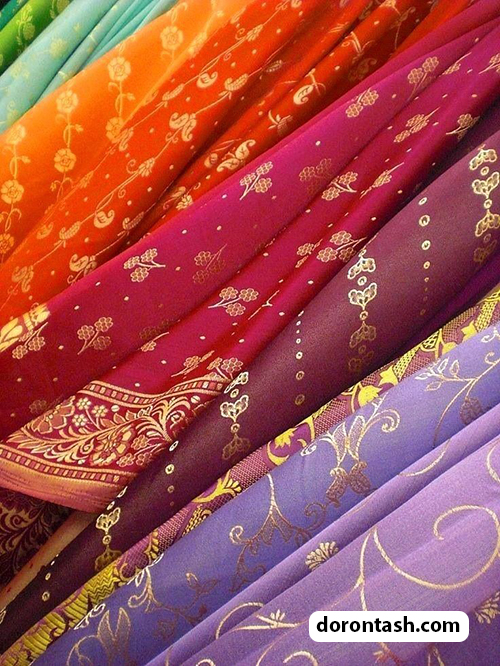
18. carpet weaving
This field of handicrafts, like other fields, enjoyed special prosperity during the Mughal kings of India, especially Akbar Shah.
This extraordinary progress was caused by inviting and employing Iranian carpet weaving masters from the cities of Kashan, Joshghan, Kerman and Sabzevar, and these artists settled all over the Indian subcontinent, especially in the cities of Agra, Fatehpur and Lahore.
For this reason, the designs and production methods were completely Iranian. After the training of Indian carpet weavers, indigenous Indian styles were gradually used.
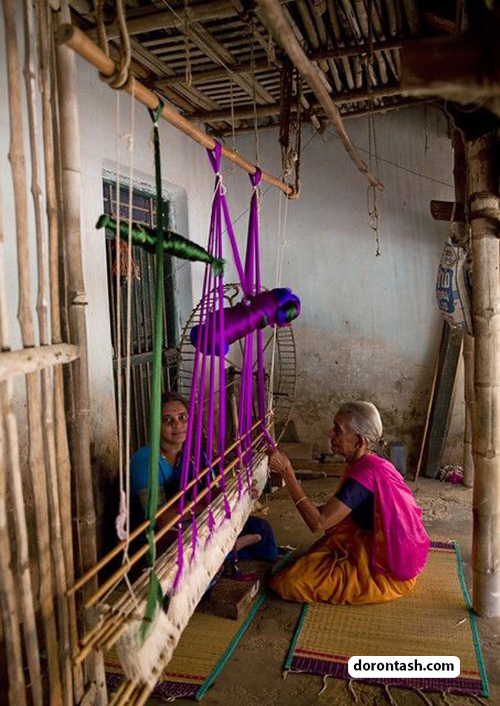
The oldest examples of carpets of this period are kept in world-famous museums, including a piece of carpet dating from 1600 AD with a hunting ground design, which is now in the Metropolitan Museum of New York.
During the period of British rule over India, this industry suffered stagnation and stopped, but carpet weaving in Kashmir, which had made a large group of people work and employed, continued to maintain its position by implementing Iranian designs and roles.
Perhaps the direct access to the best types of raw materials such as goat hair and sheep wool can be considered as one of the main reasons for the continuation of this activity.
Harmony in color and the use of mental designs are the characteristics of Kashmir carpets. The raw materials used include cotton thread as carpet warp and wool, and fluff and silk as its weft.
Of course, in recent years, due to the limitation of the amount of natural silk, they use artificial silk, which is very similar to its natural type.
For dyeing fibers, artisans prefer native vegetable dyes to imported chemical dyes, so that local artisans say that up to 800 types of dyes can be made from the materials available in nature, i.e. each of the main colors in different grades or “shades”. put down a carpet
In addition to Kashmir, carpet weaving is also popular in various parts of Bengal and Amritsar.
The looms are standing or vertical and the knots used in weaving are Persian knots. The designs and patterns used are generally Iranian, Turkish and Afghani (Herati).
In Delhi and Agra, which is one of the important carpet weaving centers of India, the designs are more Mongolian style.
Although the carpets produced in Jaipur and Jabalpur are woven on a smaller scale than in other places, they are of good quality and their designs mostly include cedar trees and animal images on a dark red, blue and milky background, which are the motifs of the carpet. It evokes the eastern and central regions of Iran.
In the southern state of Kerala, carpet weaving is also observed to a limited extent, the designs used are completely characteristic of Hindu designs.
Silk carpet is also produced in a limited way in this state. In fact, since 1950, after the independence of India, this field has been brought up with an economic attitude and with the comprehensive support of the government, it has been successful, in terms of the amount of exports to foreign countries, in terms of export weight, it has taken the first place and in terms of value, it has taken the second place (after Iran). ) to earn
Innovation in designs can be considered one of the secrets of the success of the Indian carpet industry in global markets.
Due to the high percentage of population growth in India, carpet weaving as one of the main sources of employment and income. It is considered for large masses of the population of this country.
19. Beech and making products from ivory
Since long ago, due to its malleability and at the same time its resistance to external factors, elephant ivory has been a suitable material for the expression of art and creativity of Indian master craftsmen.
This material is especially used in the construction of various statues. Of course, in recent years, due to the introduction of restrictive regulations by the government to prevent the indiscriminate killing of elephants, the consumption of this raw material and naturally the production of its products has been limited.
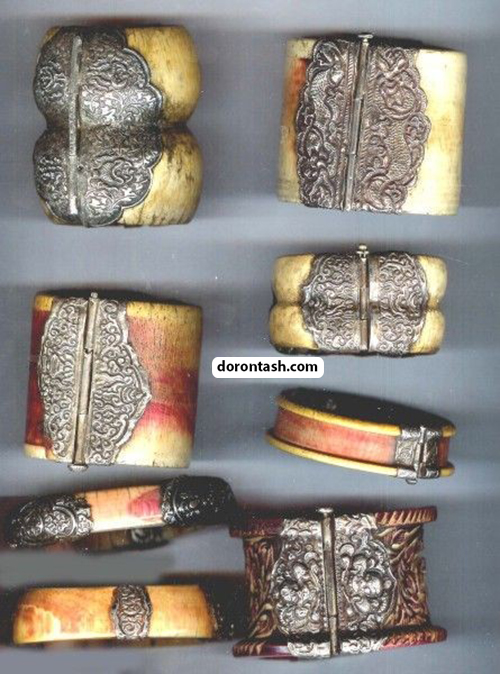
In the cities of Moradabad and Kotak, this profession is somewhat popular and various objects such as cigarette cans, photo frames, combs, ornaments and chess pieces are made from it.
The states of Bengal and Kerala, due to the presence of forests with elephants, are major centers of ivory carving with a long history. This industry is also common in the cities of Kanipur and Hyderabad.
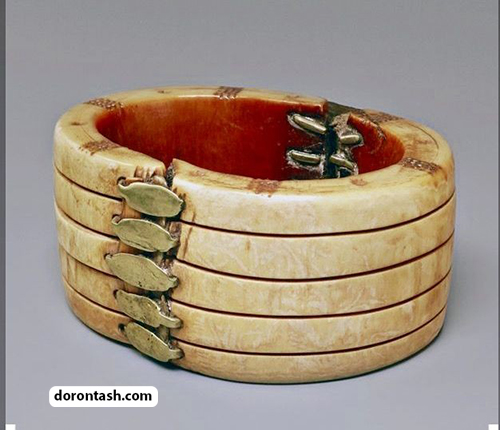
In the state of Kerala alone, more than 1,200 households provide their livelihood by making and carving various products using ivory.
In addition, the precision and skill of the artisans of this state in the work of carving ivory is unmatched throughout India. All in all, the ivory industry is one of the main pillars of Indian handicrafts, such as silversmithing and making copper and brass objects, which has gained a lot of credit for this country.
Ivory, which is actually the upper tooth of an elephant and is used for cutting, is used only in making decorative objects due to its high price.
Its main uses are making knife handles, piano buttons, photo frames, billiard balls, dress buttons, jewelry boxes, bangles, hairpins, etc. Due to the hardness of ivory, a saw is used to cut it, and while cutting to prevent pieces from breaking, water is sprinkled on the part where the saw blade moves, then with the help of a file, the uneven parts are smoothed and the desired design is created. are transferred on it and cut off the extra parts with special scissors.
This is where the carving stage begins, which is the most difficult stage of construction. The creativity and skill of a few artisans creates an artistic masterpiece.
At the end, the finished object is polished with sandpaper, and then it is gently rubbed using porcelain or kaolin to achieve the necessary transparency.
 In some cases, using a dye bath, they turn the ivory into different colors. To prevent the ivory from cracking, when it is removed from the boiling solution, it is immediately immersed in cold water.
In some cases, using a dye bath, they turn the ivory into different colors. To prevent the ivory from cracking, when it is removed from the boiling solution, it is immediately immersed in cold water.
Parallel to the increase in the number of foreign tourists who are the main buyers, this profession has recently become popular in Delhi as well. In addition to elephant ivory, buffalo horn is also used in the same way to make various art objects. Various objects such as pen holders, combs, cane handles and umbrellas, as well as knife and dagger handles are produced using this material.
In the states of Bengal and Gujarat, horn is used to make some ornaments like bangles, necklaces, brooches, buttons, etc.
In the state of Mysore, decorative boxes made of horn, which are decorated with ivory and copper pieces, are produced, which have a special beauty and fame.
In the state of Kerala, the most diverse objects are produced using horns, such as different forms of birds such as storks, swans and peacocks and animals such as elephants, lions, tigers and horses.
And also all kinds of tableware, such as calendar holders and pen holders, which are carved on them.
20. Buddhist painting and architecture
Buddhist painting and architecture has always aimed to remind the eternal truths of this religion throughout its history. This reminder, which is first in the form of symbols and signs other than the body of the Buddha, gradually spread to other lands adjacent to India, and was embodied in the body of the Buddha. The multiplicity of the figure of the Buddha, together with scenes from stories known as Jatka and also the show of how Siddhartha’s evolution and gradual transformation into the person of the Buddha and finally joining Nirvana, were all a part of Buddhist paintings that were found in temples. And Buddhist stupas can be seen in abundance. 
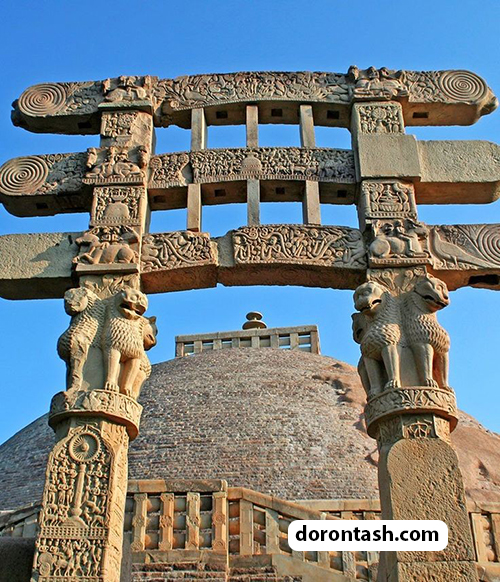
The spread and expansion of the culture of painting and sculpting in Buddhism is considered a part of this religion, therefore, although at first Buddhist painting and sculpting was done by ordinary people, but after the early centuries (after Buddha) this They were Buddhist monks who built and created Buddhist temples, statues and paintings and mixed this art with the deep philosophical and religious themes of the Buddhist tradition.


